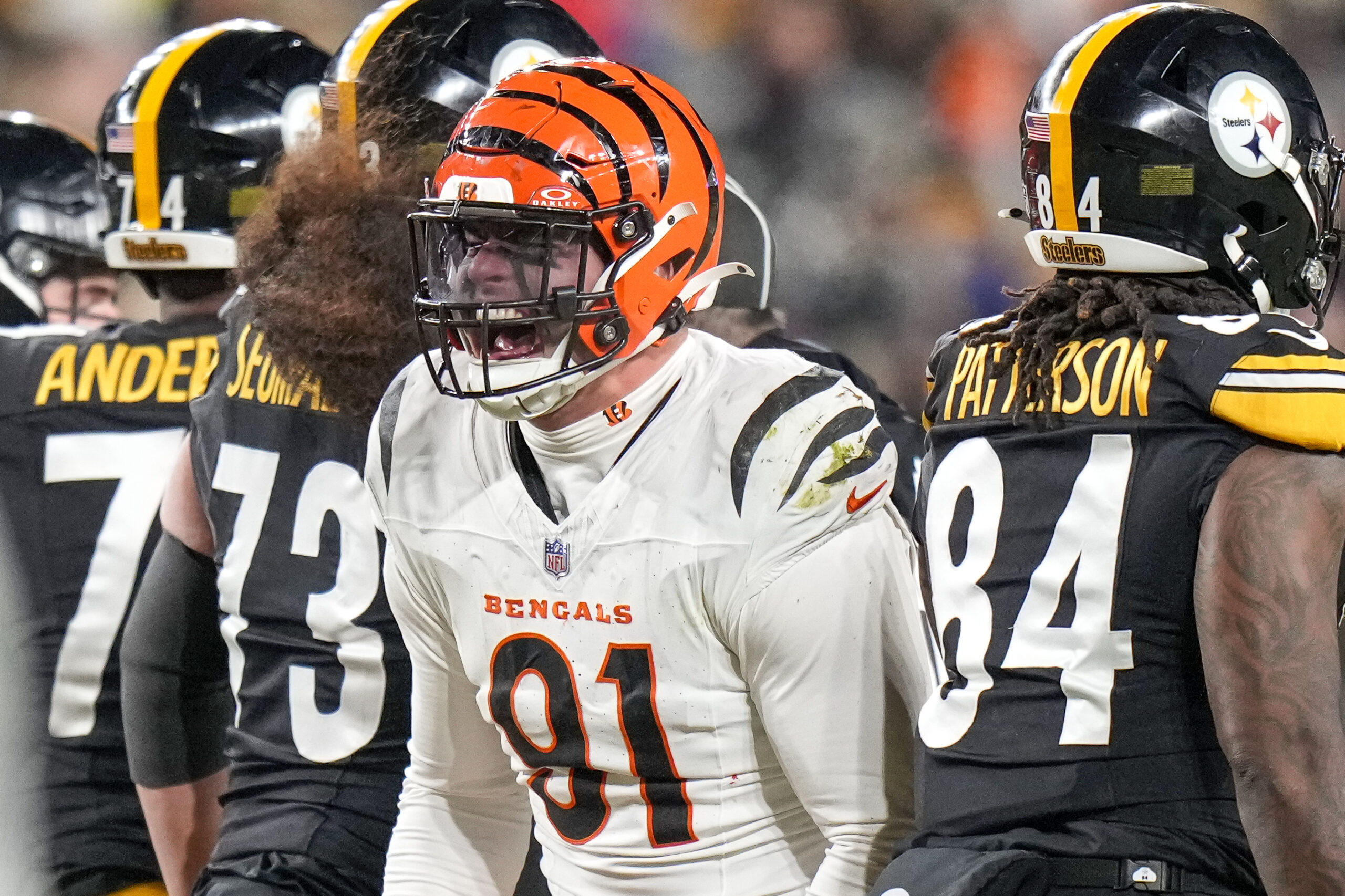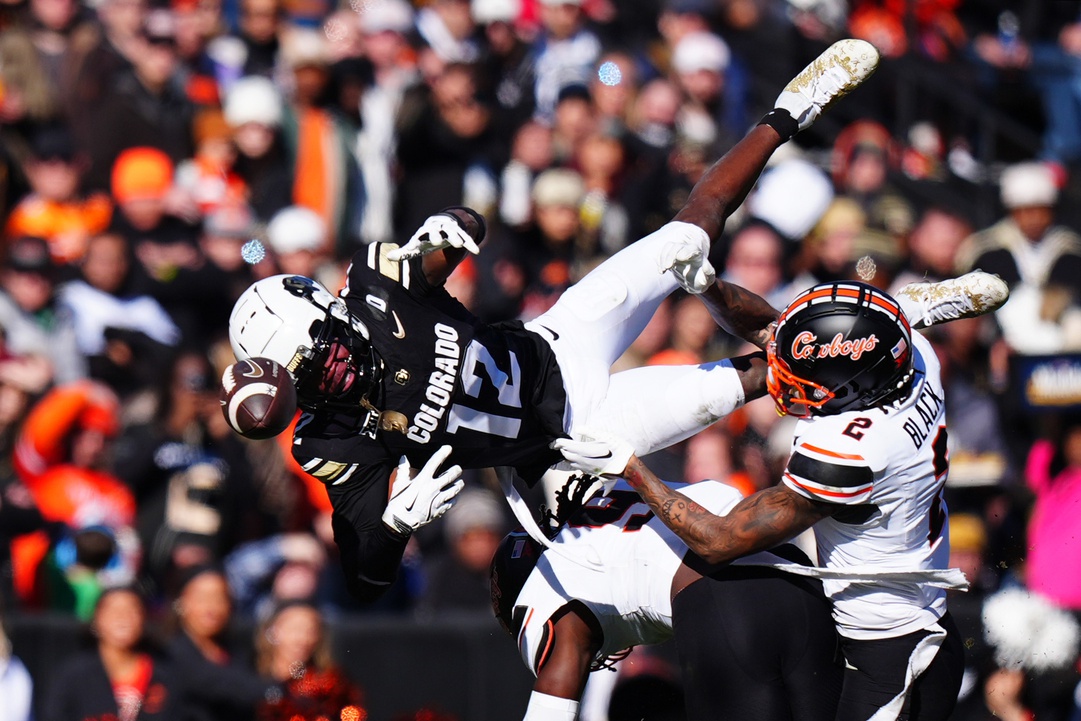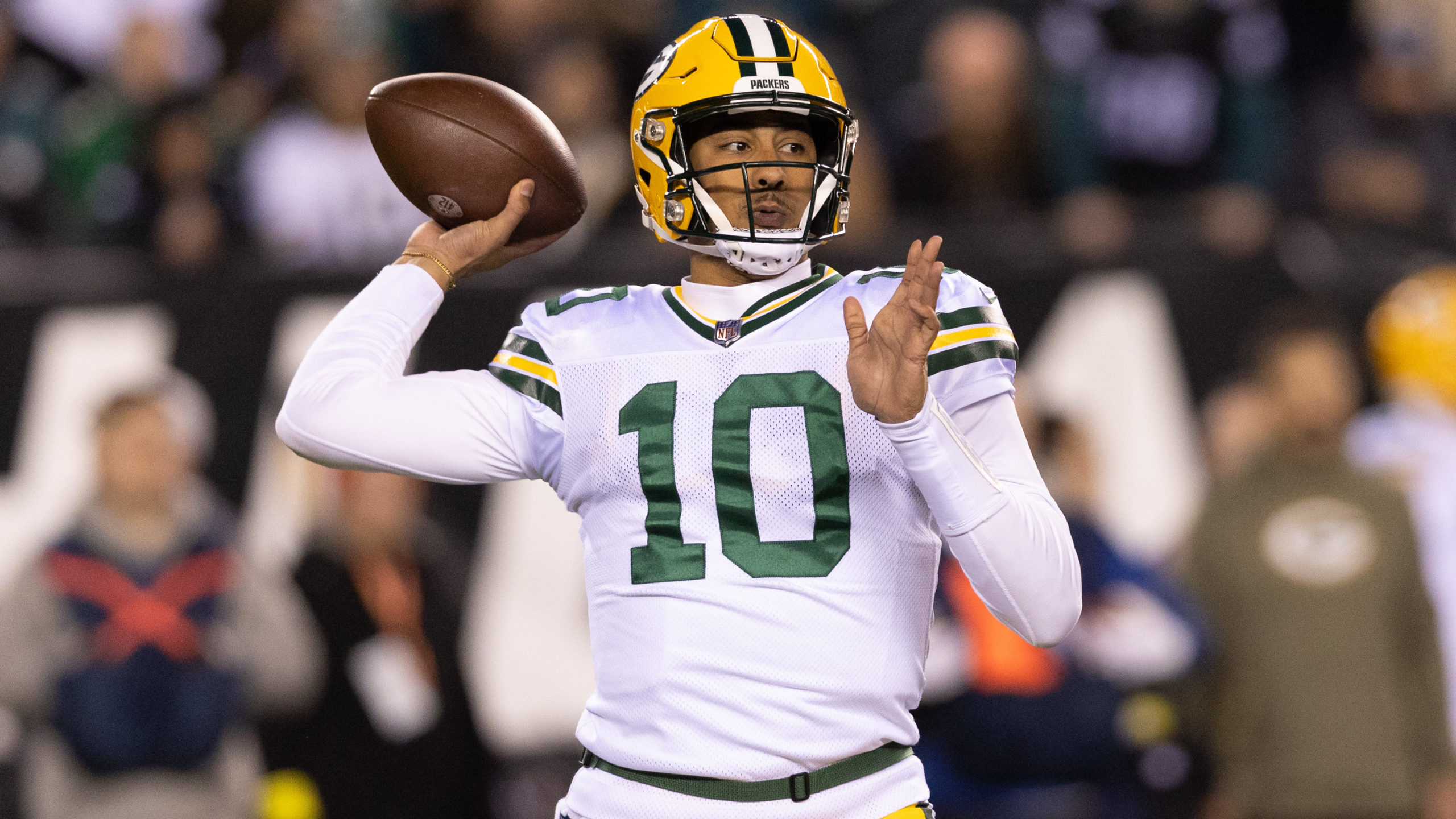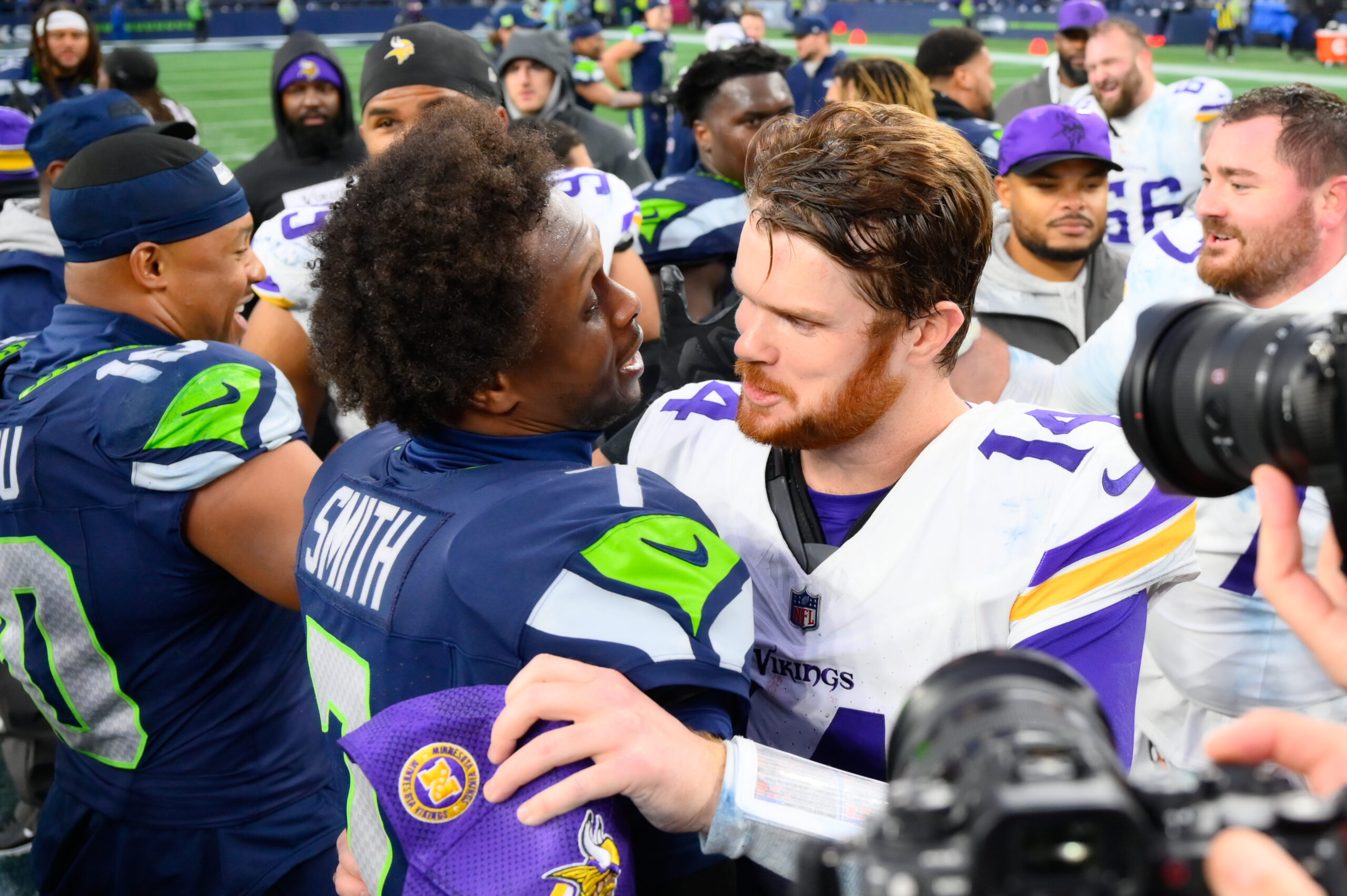NFL Analysis
9/6/24
8 min read
2025 NFL Draft: Can Malaki Starks Defeat The NFL's Safety Trends?
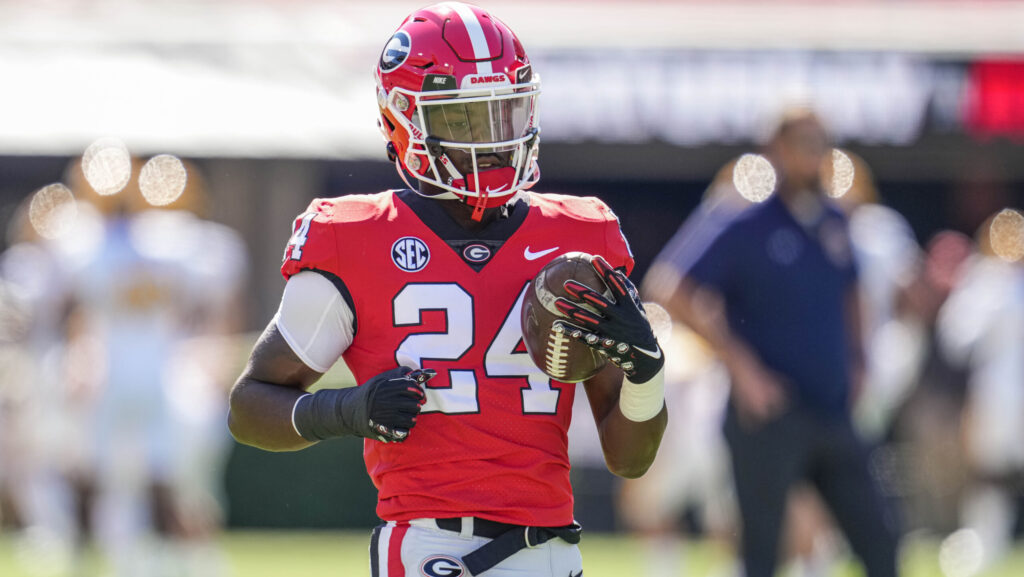
Few 2025 NFL draft-eligible prospects can move the needle in as many ways as University of Georgia safety Malaki Starks. Starks, a 6-foot-1, 205-pound junior, is a diverse defensive weapon with elite ball skills, tackling ability, and instincts on the back end of the Bulldogs' fierce defense.
After dropping out of the 2023 College Football Playoff during Conference Championship weekend last season, Georgia appears to be back with a vengeance — declaring themselves so with a 34-3 win against Clemson to open their 2024 schedule.
Starks played a starring role with a highlight-reel interception.
Malaki Starks is a safety who can cover like a corner. Ball skills, instincts, fluidity … he’s got it all. One of the safest prospects in the 2025 NFL Draft pic.twitter.com/W7P09lYzQs
— Bobby Football (@Rob__Paul) August 31, 2024
With his adjustment to the football, the body control required to peel back from carrying the Clemson receiver vertically up the field, and the explosiveness to elevate and attack the football in the air, Starks showed a little bit of everything that makes him unique in coverage.
But Starks, like the Bulldogs' defense, offers a lot of bite and can get you in more ways than one.
Can a Safety Still Go Top 10?
Starks tackles well — he's got a career missed tackle rate below 6.5 percent across 1,300 career defensive snaps. He's got alignment versatility and an endless number of ways to contribute. He's posted between 275 and 350 career snaps in the box as a second-level defender and in the nickel to go along with the other 50 percent of his defensive snaps, which have come as a high safety.
And Starks's plays come in many ways against the pass, too. He'll carry fades from the slot like on Saturday against Clemson (or against Oregon back in 2022 and Tennessee in 2023). Or he can rotate into single high and track throws up the sideline like he did against Ball State last season.
Are you looking for a bit more of a complex assignment? Starks nabbed a fourth down interception last year against Auburn in match coverage by relating to a vertical stem before plastering a different receiver as the routes swapped down the field before Starks drifted to step in front of a pass to the new No. 2 receiver.
However, as I stated in my initial top-50 rankings, the big challenge that awaits Malaki throughout the draft process differs from the player's evaluation. It doesn't take a well-seasoned set of eyeballs to recognize that he's an impact player. The valuation is where there is some intrigue around his game.
In a vacuum, this strikes me as a top-10 overall talent. The problem with such a proclamation is that safeties aren't drafted in the top 10. At least not anymore.
The last safety to have his name called in the top 10 of an NFL Draft was LSU's Jamal Adams in 2017. Before him, it was Alabama's Mark Barron in 2012.
Expanding the field to top-20 selections, you can include:
Hamilton is on his way to superstardom in Baltimore, having hit the jackpot with coach John Harbaugh and the defensive scheme implemented by now-Seahawks coach Mike MacDonald. As the only top-20 drafted safety since 2018, his successes can give teams the confidence to draft players at the position again.
>> READ MORE: See Where Starks Landed In Latest Mock Draft
Fighting An Uphill Battle
However, the NFL's strategic trends are not doing Starks and the rest of the safety prospects any favors. There continues to be a league-wide trend of two-high safety presentation figures to continue into the coming season to put a cap on explosive plays from opposing offenses.
The thought process is that opposing quarterbacks will eliminate particular routes in their progression based on pre-snap leverage and indicators — hopefully forcing the ball out underneath quickly and preventing long scores that can turn a game on its head.
The effort doesn't necessarily guarantee success with wins and losses. Still, it seems successful in forcing teams to throw fewer passes that travel significant distances down the field. There has been a steady trend in team yards per attempt averages across the NFL during the past five years, spurred in part by the pollination of the Vic Fangio scheme across many teams.
Teams exceeding 7.5 yards per attempt by season:
- 2020 - 13
- 2021 - 10
- 2022 - 8
- 2023 - 7
Before last season, ESPN's Brooke Pryor spotlighted the NFL's decrease in downfield passing — finding that the 2022 NFL season had the fewest 15+ air-yard passes downfield in a single season since 2006.
Teams are no longer hunting for a single-high post player to replicate the Earl Thomases of the world from Seattle's Legion Of Boom of a decade ago. Instead, the traits required to play split field coverages are a little less rare.
Football intelligence and reliable tackling are suddenly much more valued skills. While Starks has both, the debate likely held in draft rooms is that you can find many guys who are smart, can tackle, run "fast enough" for half-field assignments, and can leverage routes to limit explosive pass plays.
Hamilton bucked the trend because of some unicorn traits — he was in the 90th percentile or higher among NFL Combine participants at safety for height (6-foot-4 and 1/8th), weight (220 pounds), wingspan (79.75" inches) and arm length (33").
That size makes him a unique mismatch player to roam the lower levels of the defense. Starks has the physical capacity to do much of the same, along with the football IQ to process at a high level, but is listed on the Bulldogs roster at 6-foot 1 and 205 pounds.
Finding Starks' Pro Comparison
He's a good-sized safety, yet not a supersized physical mismatch. On the spectrum of diverse safeties who have passed through the draft process in recent years, I think Starks is less of a Kyle Hamilton or Derwin James type of talent and trends a little closer to names like Jevon Holland or Kevin Byard.
Holland was a plus-sized safety at just short of 6-foot-1 and 207 pounds, who played as predominantly a high post player (majority of snaps high as a freshman in 2018) and in the nickel (500+ snaps in that role as a sophomore in 2019) before opting out of the 2020 season due to the COVID pandemic.
But Holland quickly showcased in Miami that he's got a knack for added value in blitz packages and pressure situations. Starks has two career hurries in 2+ seasons at Georgia.
Byard was drafted 64th overall in 2016 by the Tennessee Titans, and he unlocked his versatility when he arrived. By the time Byard was due a second contract, he was well established as a true ball-hawking talent who could also drop down, play in the box, and support the run or play matchups in the nickel. Sound familiar?
And, oh, by the way, Byard still, to this day, supports a missed tackle rate that's nearly equal to Starks' career number at Georgia — six percent.
So if you told an NFL franchise they could get a two-time All-Pro performer with 28 career interceptions who moves around your scheme to fulfill a bevy of roles and assignments and asked them if that was worth a first-round draft choice, I would assume the answer would be yes. Even though, of course, Byard went with the first pick of the third round in 2016.
Playing at Middle Tennessee State is a little different than being ranked a 5-star recruit with what will be three years of starts at a national powerhouse like Georgia, after all.
There have only been three first-round safeties since the 2019 NFL Draft — Kyle Hamilton, Daxton Hill, and Lewis Cine from the 2022 class. Neither Cine nor Hill has materialized as a pro player thus far, with Cine struggling with injuries and ultimately being waived by Minnesota this year at roster cutdowns.
If Starks is the first since that 2022 class, he'll need to continue playing at his lofty standard on the back end of the Bulldogs defense. Still, the margin for error will still be slimmer than it is for players at other positions.
Hill and Cine, for their flaws and struggles, ran in the 4.3s at the NFL Combine, boosting their stocks. Meanwhile, NFL standouts at safety who had first-round tape, like Xavier McKinney, Brian Branch, Antoine Winfield Jr., Trevon Moehrig, and Holland, ran between 4.45s and 4.63s. All five were drafted between picks No. 36 and 45 in their respective draft classes.
If you check only some of the boxes, the NFL has shown a track record of discrimination at the position in recent years. Malaki Starks checks all of the boxes — but time will tell how definitively he can do that, assuming he declares for the 2025 NFL Draft at the end of the season.
And even then, based on his blossoming resume, he may not be drafted as high as he deserves.


